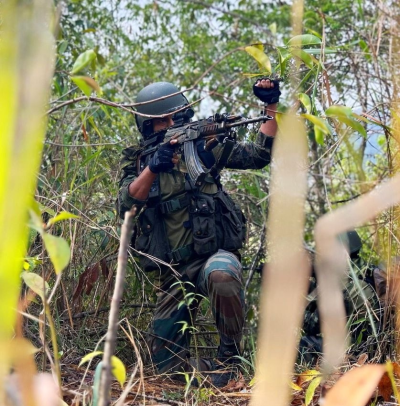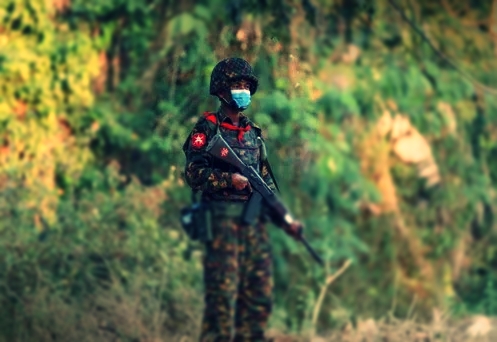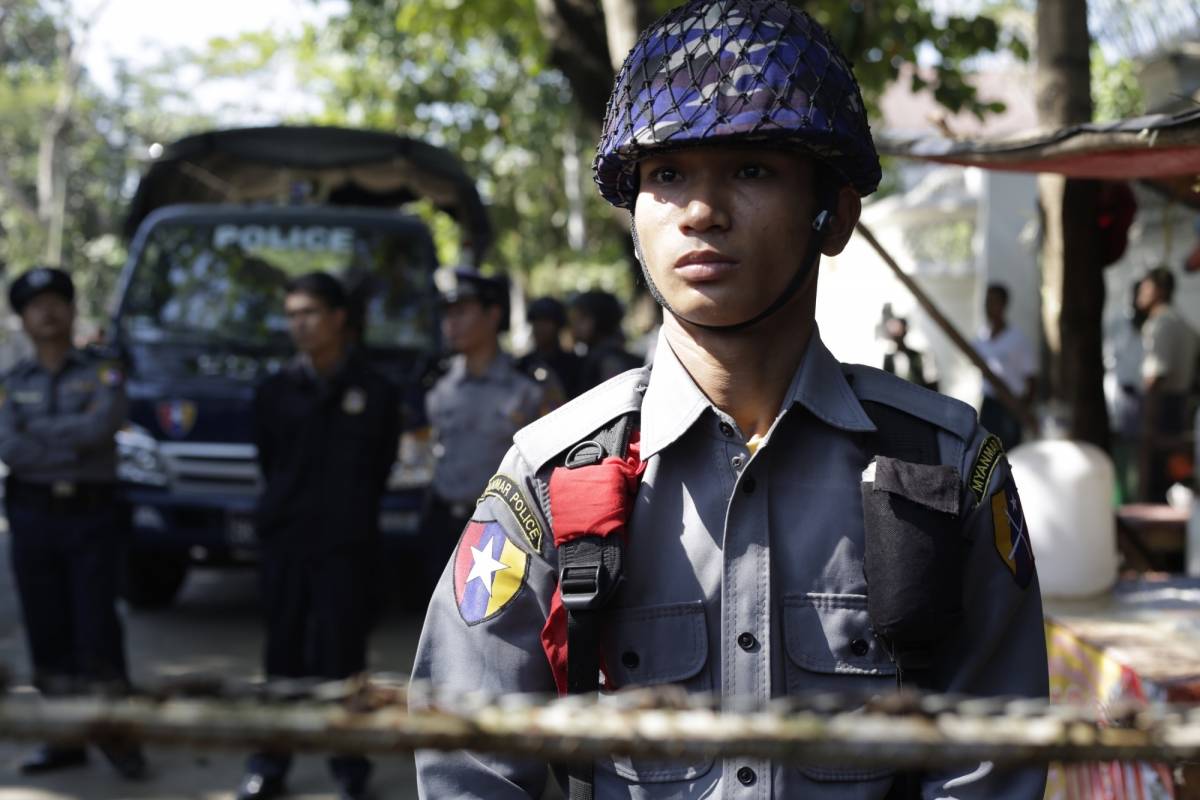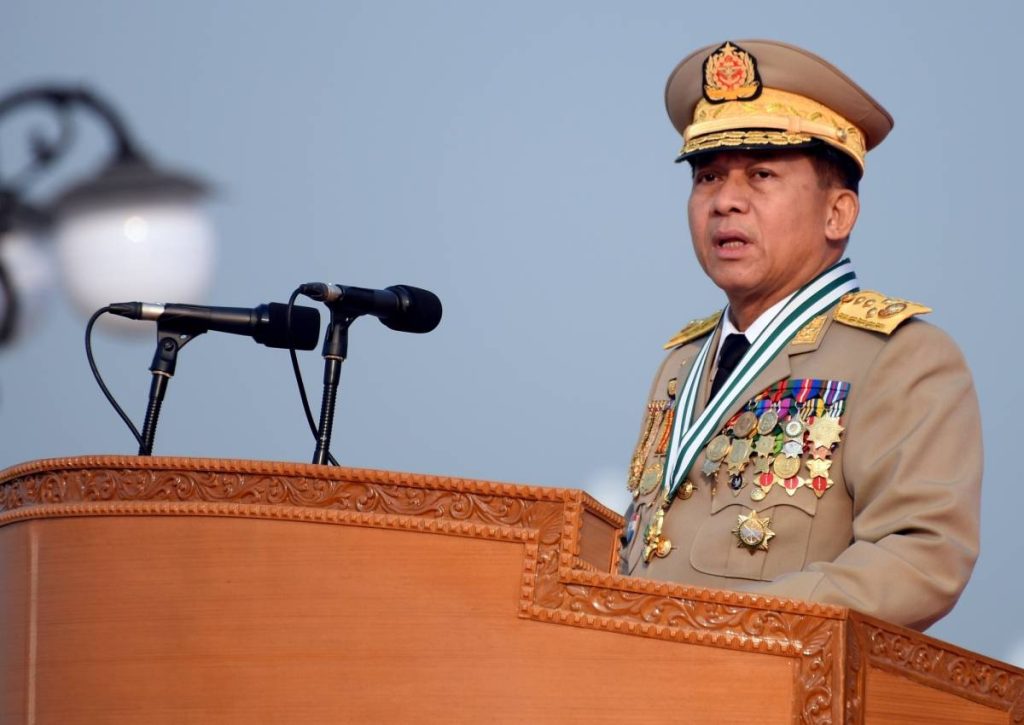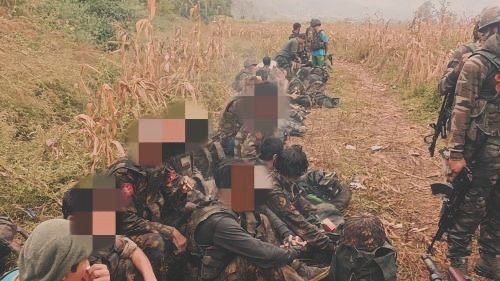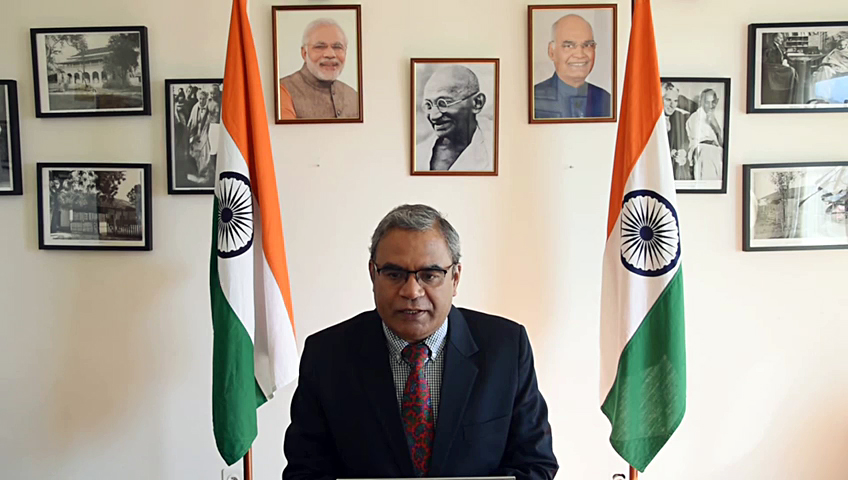The latest influx of refugees in India is in addition to the several thousands who have already taken refuge in the North-Eastern state since 2021…reports Asian Lie News
Dark clouds loom over thousands of Myanmar natives who were caught in the crossfire during the latest acts of violence between the military junta and rebel groups, forcing villagers to cross over to neighbouring Mizoram in India seeking asylum.
Pregnant women and elderly people lacking medical attention, to infants and young children lacking food and other essentials all made the long trek seeking refuge. The latest influx of refugees in India is in addition to the several thousands who have already taken refuge in the North-Eastern state since 2021.
Myanmar’s military junta is facing its biggest test since taking power in a 2021 coup. Three ethnic minority forces launched a coordinated offensive in late October, in reply the Junta responded with all its might sending ground troops and striking at the rebels from the air.
Caught in the crossfire are the innocent villagers who are facing the brunt of it. Some saw their houses burnt to ashes while others were injured in airstrike.
Myanmar’s military overthrew the democratically elected civilian government via a bloodless coup on February 1, 2021. Power was taken over by armed forces Commander-in-Chief General Min Aung Hlaing. The Tatmadaw, the military arm of the ruling Junta, has since unleashed a brutal reign of terror on the civilian population. With rebel forces of the Chin state engaged against the Junta, the people are forced to seek refuge in Mizoram and Manipur
The latest influx of refugees in India is in addition to the several thousands who have already taken refuge in the North-Eastern state since 2021.
Mizos share strong ethnic and familial ties with the Chin community. The ethnic Chin live in the North-Western area of Chin State in Myanmar. The Chin are ethnically very diverse with six main tribes which includes the Mizo and Zomi (Kuki) tribes. The Chin State is one of the most underdeveloped regions in Myanmar, with limited infrastructure, communication or healthcare facilities.
The refugees have walked for several days crossing mountains and dense jungle with their meagre belongings. Living off the land on bamboo shoot and game they make their way into Mizoram. The state has a 510 km border with the Chin State.
They bring stories of entire villages burnt down, civilians used as human shields and shelling of residential areas. Redemption for them comes as they cross the bridge on the River Tiau that connects Zokhawthar of Champhai district in Mizoram to the Chin State.
Esther Lalpekmawii, mother to a nine-month-old infant says her ears still ring with the sounds of the shelling and the air-strikes and that she is still scared by what she had encountered.
“When we heard the sounds of bomb blast and some splinters hit our house, we immediately locked our house and run away with my nine-month old child and clothes and entered Zokhawthar by crossing the river. We were scared about all things that happened in our village. My house was also damaged. We lost everything. Now we have nothing. We don’t know how we will live. We are still scared to go back to my village because the current situation is not good. We are living here very peacefully,” says Esther.
51-year-old Zothangliani is now living at the James refugee camp at Zokhawthar. She and her family recall their struggle saying that hadn’t expected to make it across the border to Mizoram.
“On that day, my young child was playing volleyball and he immediately rushed to home after hearing the sounds of bomb blasts. We didn’t have evening dinner. We came out of our house immediately on that day evening and fled towards Zokhawthar,” Zothangliani recounts.
She says she grabbed whatever she could lay her hands on some household goods and crossed the border by travelling on a motorbike.
“We didn’t sleep the entire night… We also feared that, our house was damaged. We scared after hearing big explosion sounds. One after another bomb was dropped near village. We also saw that the bombs were dropped from helicopters. I was scared to see the horrible situation. Even I was crying after seeing the situation. We left our other household goods, our chickens.”
“The local YMA had received us at the border and took us in a shelter home. I am still feared about the situation; how can we go back to our village. I can’t describe anymore about the horrible situation, because it hurts my heart,” she adds.
Organisations like the Young Mizo Association (YMA), NGOs and the Mizoram government are now engaged in ensuring that these refugees get proper care and hope that the situation gets back to normal enabling them to return home.
Khiannunpar, a resident of Chin state of Myanmar living with her family in a refugee camp in Zokhawthar area, is nine-months pregnant. Forced to come to India, the 25-year-old says she and other refugees of the camp were getting full support from the Mizoram government.
“I am now in the ninth month of my pregnancy. I already have a three and a four-year-old child. Earlier, I visited a local health sub-centre for my health check-up and the administration has also provided us medicines. Doctors and nurses have also visited us to inquire about our health. We are also getting ration, foods. We are so happy with the Mizoram government’s work for supporting us,” the expecting mother says.
Vanlalruata who has already spent two years at the Bethel camp in Zokhawthar. was part of a group of Chin refugees who fled their homes earlier. Vanlalruata is thankful to his Mizo brothers for their help.
“We came here in September 2021 as refugees and have been living here. As of now, there are eight pregnant women in this camp and 17 babies were born here since September 2021. The Mizoram government and NGOs are supporting us and have been helping us. When we needed medicines, they have provided this. The government is trying their best to mitigate our problems. We are thankful to the Mizoram government,” Vanlalruata says.
The Young Mizo Association (YMA) have been providing food and other materials to their Myanmar brothers and sisters, which the latter have openly acknowledged. The state government also sent several refugees to Aizawl for better medical attention.
“We are providing rice, dal, cooking oil, salt to the Myanmar refugees. Apart from this, we are also providing baby foods. Our service was started when they came here,” says Medal Thanga, Secretary of YMA (Zokhawthar).
Most of the Chin refugees want to go back to their villages but the uncertainty in the situation means they are forced to stay in makeshift camps. Although relative peace now prevails, the continuous fight between rebels and the Junta could push the region into chaos again.
“It’s unpredictable, sometimes it’s peaceful and within a minute you don’t know what will happen. Now the situation is peaceful,” a local resident Rama says.
50-year-old Vunglianzing saw her house burnt down in front of her, yet she yearns to return to her village.
“My house was totally burnt down, damaged. We have lost everything. But we want to go back to my village and to construct a new house. Now we are staying here (Zokhawthar) in a peaceful environment, but we miss our own village. We are now waiting, when we will go back and when the God will open the path,” Vunglianzing says.
Even though the asylum seekers are being taken care of by the local administration, but the comfort of one’s own home can be substituted by none.
Thanlianchhiari like many others staying temporarily in Bethel refugee camp says, “We want to go to our own village, but the current situation in Myanmar is not good. There is no house to live there. We pray to the God that the situation would become peaceful soon.”
Lalremruati, a mother of a three-month-old infant and resident of Sekan village of Chin, says she had to go through hardships to make the journey to India.
“My family had faced so many problems. The military came to our village and went one by one house, knocked the doors and asked them to come out. Some people were very scared. The military broke out the doors and let them to come out. That time was worst. Last year, the military burnt down the houses. They burnt many houses in our village. Our village is almost finished. We have lost everything,” Lalremruati notes with seemingly heavy heart
According to Mizoram government, nearly 5,000 Myanmar natives had come to Mizoram in latest influx and taken shelter in six makeshift camps in Zokhawthar area in Mizoram’s Champhai district. As the situation improved some of them, have returned back to their homeland with situation.
Mizoram’s Director General of Police (DGP) Anil Shukla says that due to fights between the rebel groups and military Junta in the bordering areas of Myanmar’s Chin State, the situation is tense and the Mizoram police, Assam Rifles have deployed adequate security along the bordering areas.
Following the recent incident, 75 Myanmar army personnel entered into Mizoram and they have been taken back to Myanmar, the senior police official said.
“There was a major fight between the rebel forces and military Junta in Myanmar leading to overrun by rebels of some of the camps of military Junta. Because of the fight large number of villagers of the Kawmoi village next to Zokhawthar had crossed over into India temporarily. Two major camps were overrun and because of that 75 Myanmar army personnel had entered into Mizoram and we had rescued them and also handed over them to our border guarding force Assam Rifles. They have been taken back to Myanmar,” the Mizoram DGP said.
The refugee crisis in this region however continues. The Chin tribes have migrated to Manipur and Mizoram in various waves as the volatile region erupted in violence.
In Manipur the assimilation of the Chin refugees, with the Kukis has complicated the inter-community relationship and caused resentment to the Meiteis. The state of Manipur has been witness to severe violence as the ethnic conflict continued. On the main grouses of the Meiteis is the continuous influx of Chin refugees which has put a burden on natural resources.
A free Movement Regime between India and Myanmar allows citizens living in an area within 16 km in either side of the border to travel up to 16-km with border pass and stay up to two weeks per visit.
This privilege is often abused and results in increased tensions between communities. With the crisis in Myanmar still continuing the sufferers are just these people whose only prayer is to make it alive to see the next day. (ANI)

